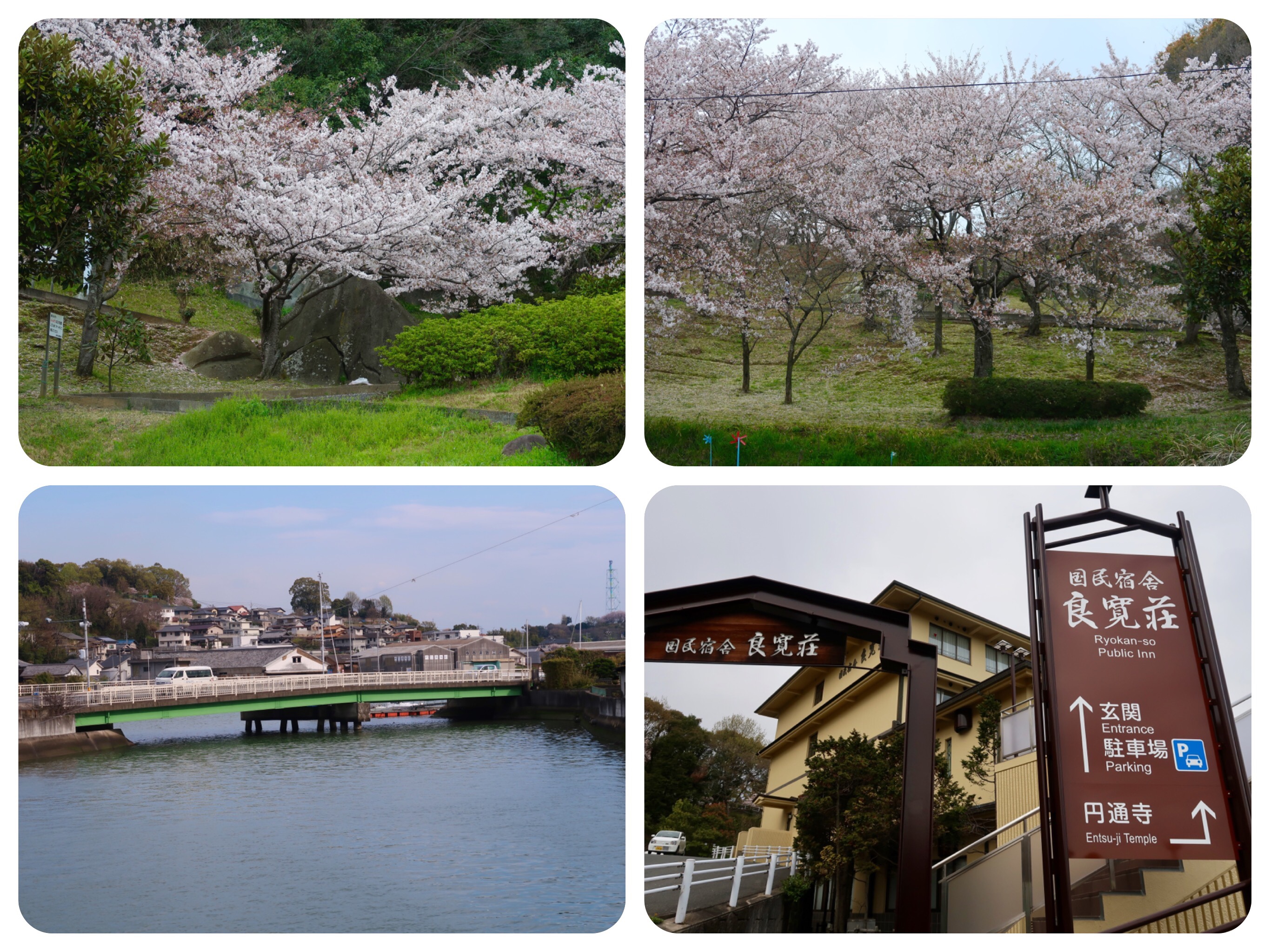Day 6 -The Chūgoku 33 Temple Kannon Pilgrimage, Japan - From Rendai-ji to Entsu-ji Temple, Where Ryokan, The Zen Master, Trained







Day 6 -The Chūgoku 33 Temple Kannon Pilgrimage, Japan - From Rendai-ji to Entsu-ji Temple, Where Ryokan, The Zen Master, Trained
Today we asked to be served an early breakfast, so we could start walking early, by 8:00am.
I was unsure about the exact distance when I did my planning for the day, because Google Maps had not matched the signs I saw on the road the day before as we walked towards Rendai-ji.
I thought to allow enough time so that we could walk slowly, so my legs and knees would have time to adjust to the pressure of walking all day up and down mountains, carrying a very full backpack.
According to my estimates, we were due to arrive at Entsuji Temple, by 2:30pm.
Well, that did not happen.
I needed some rest time, and so we arrived at the temple by 3:45pm, which was not enough time to see this ancient temple, so instead we walked to our hotel, Ryokanso, to check in.
The hotel is located right next to the temple, so we can visit it tomorrow morning with lots of time to take it all in.
Despite walking slowly, it was an enjoyable day for me.
The path down from Rendai-ji temple where we spent the night before, was mostly downhill.
Then we entered an urban stretch of commercial businesses, which was not an attractive walk, but at least it offered us lots of convenience stores in which we stopped to use the toilets.
By lunch time, I was not really hungry, but I felt desperate to rest my legs, so we stopped into a recently opened Indian restaurant.
They had large and comfortable booths, and it was a good place to rest for awhile.
The Indian meal, like in many Indian eateries in Japan, consisted of a very yummy Indian Nan flat bread and two kinds of vegetable curries to dip the bread.
It also included free Wi-Fi, a lassi drink, a salad and a rose jelly for dessert, all for $8.
After lunch, we walked for a few more hours.
I started fantasizing about emptying my backpack and what I could leave behind, hopefully when we get to our hotel in Hiroshima.
In Japan, it is possible for a pilgrim to walk with only one set of clothes.
Almost every hotel has coin-op laundry facilities.
You also get a Yukata (summer kimono) to sleep in at night, and all hotels offer toiletries and bottles of shampoo and conditioner.
I might not go down to one set of clothing, but I can definitely cut back on what I am carrying.
We were nearing Mt. Sugurusan, where Entsu-ji Temple is located, but
I really needed another break.
We started looking for a cafe, but there were none.
My map showed three small cafes in the town of Tamashima.
I liked the old town of Tamashima.
It has a river and canal side traditional houses, with adobe mud walls covered in wood paneling, beautiful plaster exterior decorations, and tile roofs.
We passed by a tiny roadside cafe called Lahaina Tamashima.
It was actually more of a Juice Bar than a cafe, with a small seating area.
We ordered two fresh strawberry juices without sugar. (They often add sugar to tart fresh juices in Japan.)
The boyfriend of the owner of Lahaina invited us to sit, and he came inside to chat with us.
Another of their friends joined us as well.
We chatted about this and that.
The boyfriend, whose name was Kintaro, had just come back from the dentist, and his mouth was still numb.
He was a funny guy, and when we got ready to leave, he paid for our fresh juices and adamantly refused our offer to pay him back.
It was a short walk through the town and up into the mountains to get to our hotel, Ryokanso.
Although the hotel is a modern structure that feels like a Shokubo, (temple lodging), it actually started in the Edo Period to host the many traders who came to the area.
In the Edo period, the port town of Tamashima flourished as a trading area for cotton and tea, which was carried by boats to be distributed.
At that time, traders used the tea houses for conducting business, meetings and to entertain clients.
The culture of tea is firmly rooted in Tamashima and tea parties are still held in the city regularly.
We got a lovely Tatami mat room, a soak in the public hot baths, and a simple but tasty and fresh Kaiseki meal.
Entsu-ji Temple is known as the temple where Ryokan, the famous calligrapher, poet and Zen Master, trained when he was young.
Since we have not visited the temple yet, I will write about Entsu-ji and about Ryokan tomorrow.
Wishing you a life full of love,
Tali
Daily Stats:
Steps: 35,765 steps
Distance Walked: 26 Kilometers
Active Walking: 6.5 hours
Total Time: 7.5 hours
Total distance walked on the pilgrimage so far: 143 Kilometers
Temple Visited: None
Accommodation: Ryokanso, right next to Entsuji temple.
They offer spacious Japanese style rooms, a small hot spring bath, and a simple but fresh Kaiseki dinner and breakfast.
